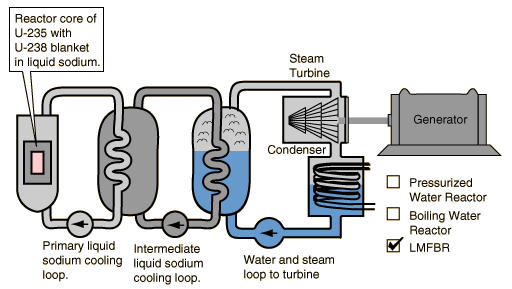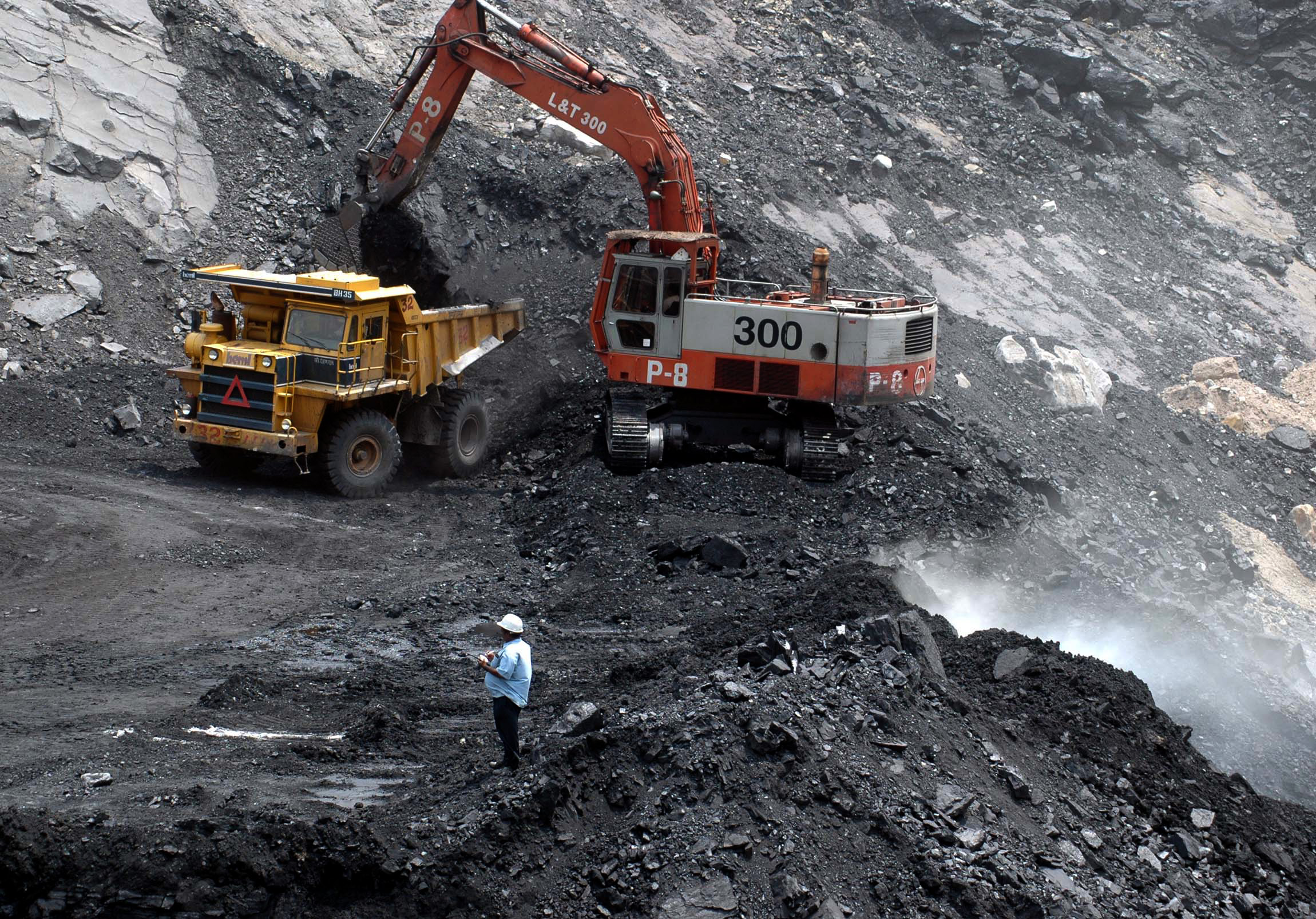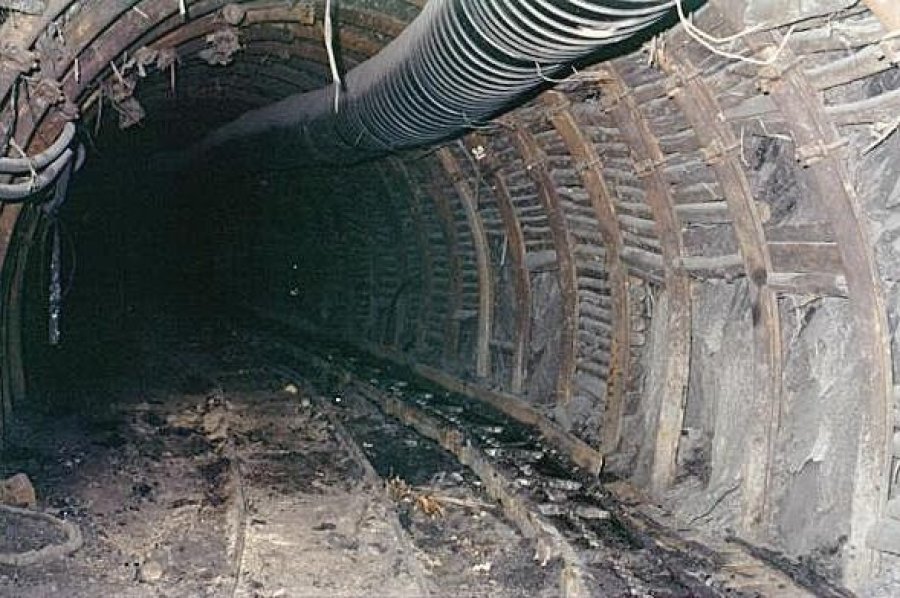-
Chapter 13: ENERGY INFRASTRUCTURE
Introduction
Types of Reactors
Fast Breedor Reactors
The inputs are natural uranium and thorium 232. Coolant is liquid sodium and no moderator s needed. Output is plutonium - 239 and uranium - 233. KAMINI in kalpakkam is the world's only reactor for this purpose. FBR produce more fissionable output than they consume.

Fig 1: Fast Breeder Reactor
Water is used as coolant, steam source and moderator. Fuel can be Uranium - 235 enriched which uses heavy water as a moderator e.g. Pressurized Heavy Water Reactor in Kakrapar.
If thorium is used as a fuel then it is a Advanced heavy water reactor in BARC, Mumbai.
Treaties to Control spread of Nuclear weapons
Nuclear Non proliferation treaty
- Prevent spread of nuclear weapons and technology.
- Israel, India, Pakistan, North Korea are non parties. China blocking India's entry to the NSG as India isn't a signatory of the NPT
- It was discriminatory as it didn't allow any state that didn't have nuclear weapons from conducting nuclear tests. The treaty recognizes five states as nuclear-weapon states: the United States, Russia, the United Kingdom, France, and China
Comprehensive Nuclear Test Ban treaty
- Bans all nuclear tests for civilian and military purposes
- India, Pakistan, North Korea are non parties. US, China have signed but not ratified it.
- All states who have nuclear reactors [Annex II states] must sign it.
Export Control Organizations
Nuclear Supplier's Group
- Formed in 1974 and currently has 48 members.
- Aim is to prevent nuclear proliferation by preventing transfer of technology, material and equipment's.
- Formed in response to the 1974 Indian Nuclear Test.
Australian Group
- Created in 1985 to help countries identify exports that could lead to chemical and biological warfare.
Missile Technology Control Regime
- Informal and multi lateral partnership between 35 countries to prevent the spread of missiles and unmanned aerial vehicles capable of carrying 500 or more kg payload over 30 km distance.
- India became a member in 2016.
Wassenaar Agreement
- A multilateral export control regime to prevent spread of conventional arms and dual use goods.
LED Program of Ministry of Power
Energy efficiency services ltd is a joint venture between NTPC, PFC, REC and Power grid.
It has launched two programs:
- Domestic efficient lighting program - Unnat jyoti by providing LED at affordable prices.
- Street lighting national program - Replace bulbs with LED's without taking money from urban local bodies.
DISCOM's or Distribution Companies buy power from generators at wholesale rate and sell to retail consumers at retail prices. However the Average tariff is lower than the Cost of supply hence DISCOM's are in losses.
Indian power generators have a low Plant Load Factor which is a ratio of Actual power generated to Maximum capacity. This is due to supply of coal being erratic and DISCOM's being in debt cant invest to increase capacity.
Open Access Policy
Consumers who consume more than 1 MW power can buy it directly from Power exchanges where demand supply regulate prices.
Coal Mining in India
Indian coal is Gondwana coal and not metallurgical coal. It has high ash content and high ash fusion temperature but low sulphur content. The heat released by it is also low.
The coal is of the following types based on heat content: Peat, Lignite, Bituminous coal, Anthracite.
Indian mining is 85% open cast mining which causes high environment damage but is safer and cheaper. China has 90% underground mines which are costlier but less environment damage.

Fig 1: Open cast mines

Fig 2: Closed cast mines
Coal Miners Safety issues
Coal Mines were nationalized in 1973 and one of the main reasons given for doing this was the poor safety record of private sector mines. However today there is a accident every third day and a fatality every seventh day in the mines.
The coal miners face many occupational hazards like dust, noise related diseases. They also receive lower payout during accidents. The majority of deaths occur due to roof collapse related accidents and no explosions [which are the most common cause for deaths in US and China].
Conventional and Unconventional sources of Gas in India
Conventional Sources of Gas
- Small in volume but easy to drill
- Reservoirs have natural fractures.
- Medium to high permeability of reservoirs.
- Natural gas is an example
Unconventional Sources of Gas
- Hydralic fracking needed as high volume but difficult to drill
- Reservoirs are impermeable and no natural fractures.
- Tight gas sands, Shale gas, sync gas, coal bed methane.
Shale gas extraction isn't a priority in India since lots of area is needed, water quantity is high and Guar gum supply needed but it will affect the price of this commodity.
Sources of Shale gas reserves in India are Cambay, Gondwana, Krishna Godavari and Kaveri and Assam - Arakhan.
Synthetic Gas
This is present in deep, underground coal reserves. Manual mining is difficult. The technique used is digging two wells one for injecting water, oxygen and gassifying agent and the second production well for recovering the Syn-gas.
By this method harmful byproducts remain underground. Water requirement is low.
Fig 3: Synthetic gas extraction process.
Hydrocarbon Exploration and Licensing Policy 2016
As per the constitution, Union owns all hydrocarbons and Ministry of Petroleum has a New Exploration and Licensing Policy started in 1997 and now transformed into Hydrocarbon Exploration and Licensing Policy 2016. NELP had 10 rounds of auction.
Features:
- Uniform license for unconventional and conventional oil and gas exploration.
- Graded royalty which is inversely related to risks and cost of sale of hydrocarbons. High to low risk is Ultra deep sea mining, deep sea, shallow and land.
- Revenue sharing from gross sale of oil, gas unlike previous policy which favored profit sharing from sale after cost of exploration is recovered.
Miscellaneous
Natural gas pricing in India is a weighted average of the gas price of US, UK, Canada and Russia.
Difference between BS-V or BS-VI norms
BS-V engines have to be fitted with a Diesel particulate filter of DPF which removes soot from the emissions. But this engine has to be fitted in a limited space and might not be possible in small cars. So to change the design of the small cars they might have to be made bigger than 4 meters and so might miss out on excise benefits. Also the DPF needs 600 celsius temperature which is not possible in Indian conditions.
For BS-VI engines a special AUS32 fuel is needed along with normal petrol or diesel and a Catalytic reduction technology has to be started. AUS32 supply must be started in the country. The SCR and the DPF modules have to be tested and validated to Indian conditions which itself shall take close to 4 years.
Automakers have unsold inventories of thousands of units of old BS-III/IV norm engines and a move towards BS-VI directly shall affect them further. The problem is also for oil companies too as they need an investment of Rs. 40000 crore to upgrade the fuel to BS-VI quality norms. BS-VI norms shall have to implemented in all country as the previous experiment of only implementing in cities and later in rest of the country has failed.
Major polluters like trucks, lorries couldn’t make the switch to BS-IV as BS-IV fuels were not available outside the metros.
Review of the National Electricity Policy, 2005
The aims of the 2005 Policy included:
(i) access to electricity for all households by 2010.
(ii) meeting the power demand of the country by 2012
(iii) supplying reliable and quality power in an efficient manner and at reasonable rates.
(iv) financial turnaround and commercial viability of the electricity sector.
It was noted that a village with 10% electrified houses is assumed to be electrified. In 2017, 99.4% villages are electrified, but more than four crore households in the country still do not have an electricity connection. It recommended that the definition of village electrification should be changed to declare a village electrified only when all the households of the village are electrified. Further, no village should be declared as electrified unless at least 80% of the households have an electricity connection.
It was recommended that village electrification policy should cater to Above poverty line households too.
The share of hydro power in the total energy mix has decreased from 25% in 2007-08 to 14% in 2017. The hydro capacity that was harnessed as of March 2017 is 30% of the hydro power potential in the country. It recommended that hydro power can be used as a balance to support the grid and even out the fluctuations in supply. The Committee recommended declaring hydro power as a renewable source of energy (Currently hydro plants with capacity less than 25MW are treated as renewable).
The economic viability of the electricity sector depends on the distribution sector, which is the most financially distressed in the country. The high AT&C losses are the major reason behind the distressed condition of the discoms. The concept of AT&C losses is flawed as it disguises commercial losses which unlike technical losses can be eliminated completely. It was recommended that these two components must be segregated.
Indian Renewable Energy Development Agency Ltd
Indian Renewable Energy Development Agency Limited (IREDA) is under the administrative control of Ministry of New and Renewable Energy (MNRE).
IREDA is a Public Limited Government Company established as a Non-Banking Financial Institution in 1987 engaged in promoting, developing and extending financial assistance for setting up projects relating to new and renewable sources of energy and energy efficiency/conservation with the motto: “ENERGY FOR EVER”
The main objectives of IREDA are :
To give financial support to specific projects and schemes for generating electricity through new and renewable sources
To give financial support to specific projects and schemes for conserving energy through energy efficiency.
Quiz
Score more than 80% marks and move ahead else stay back and read again!